I am a fan of yesteryear’s hits. You may argue that beauty is in simplicity, but sometimes people are too lazy to learn new tricks in their songwriting skills that they end up sounding awful and bland.
Complex arrangements are beautiful too. Several elements affect how a song sounds.
I am not saying (in a way) that you can’t make a hit song with a simple arrangement.
Yes, you can, but, arguably, the best songs that stood the test of time are well arranged and have beautiful chord progressions.
Is There A Formula To Writing A Hit Song?

There is no absolute formula to writing a hit song. A beginner songwriter from a remote part of the globe can become an overnight sensation by writing a song.
In contrast, a seasoned songwriter may release a new single and won’t make it to the top of the charts.
There is no one rule or formula for writing a hit, but some common things that these hits have.
Hit Songs Connect With The Listeners
One of the apparent things that hits have in common is that they are relatable to their listeners. A song that resonates or speaks to its listeners as if it sings about the listener’s own life experience.
Everyone has that one sonata that can make them cry or remind them of something from their past or childhood.

Hit Songs Have Chord Progressions
That Listeners Are Familiar
I am a fan of intricate and beautiful arrangements, but I am also a fan of simple yet elegant chord progressions in songs.
When used properly, a simple or complex chord progression can elevate your song to heights you’ve never imagined.
So it is essential to learn how to use chord progressions to make your song sound better.
What Is A Chord Progression?
We define chord progression a the sequence of chords and how they are used within a song’s arrangement. You may also say that it is the order of chords that are used in a song. What comes first, and what is next.
We call a chord progression the chords you use and the order of these chords in your song.
Chord Progressions Are All Patterns
Yes, you read that right. All of today’s hit songs and yesterday’s hit songs have followed and used specific chord patterns that worked.
Songwriters and producers have used such patterns a thousand times, and for some unexplainable reason, people still like it – that’s why they work.
The ability to identify these patterns will be a very crucial skill to become a better songwriter.
How Does It Affect A Song?
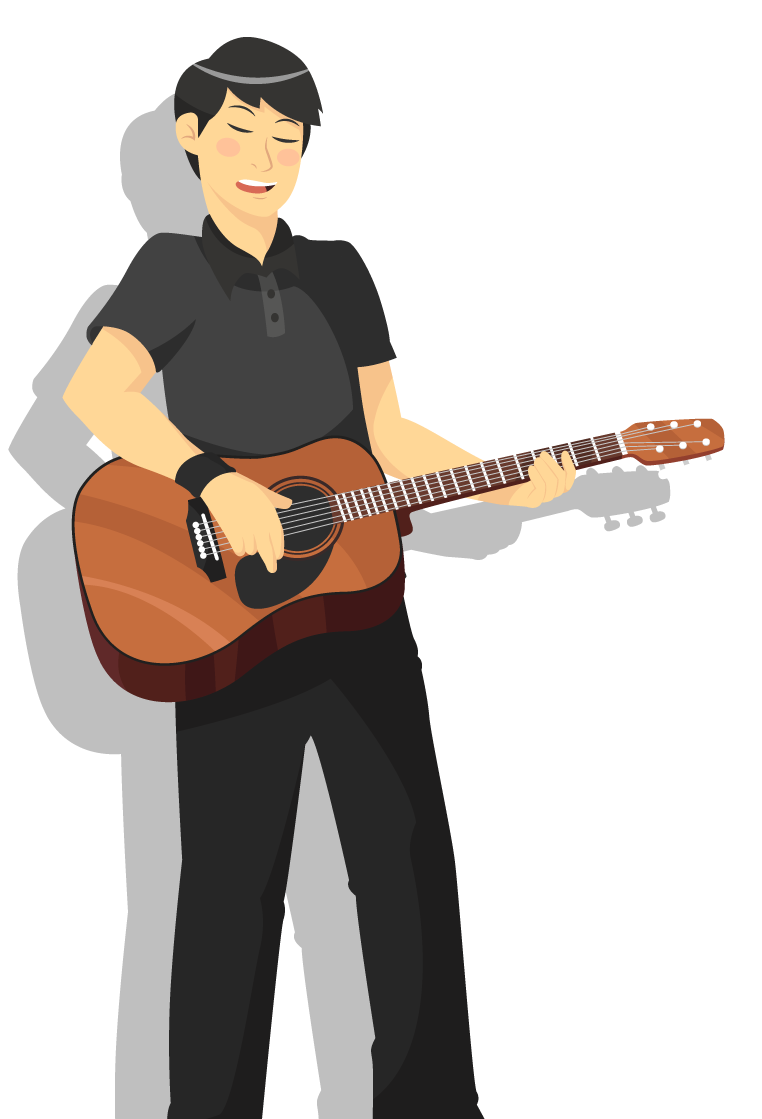
It makes or breaks your song!
It is your job as a songwriter to make sure that your song sounds good or pleasing. The chords that you use for your project and how you put them together is instrumental to your composition’s success.
Here are some of the things that chord progression does to your song
- What you use can emphasize the emotion of the song.
- A progression can lift the melody of your song.
- Progressions create the atmosphere and the vibe of your music.
How do we apply them to our song, and how do I make the right choices?
First, some basic music theory.
How To Write A Chord Progression?
I will walk you through the fundamentals of identifying them on a scale and how to use them in an actual song setting.
As someone who lives in the 21st century, you are continuously bombarded on the radio by different progressions embedded in every song you listen to.
So, all you have to do now is understand how you can use them for your songwriting gig.
The 7 Basic Chords Found In A Scale
Since we are discussing chords, I am assuming that you already have a fundamental understanding of the scales.

For our example, we will use the C major scale. In standard notation, it looks like the image above.
It doesn’t matter if you don’t read any music notation, we will simplify things for you. C major scale simply means the following notes.
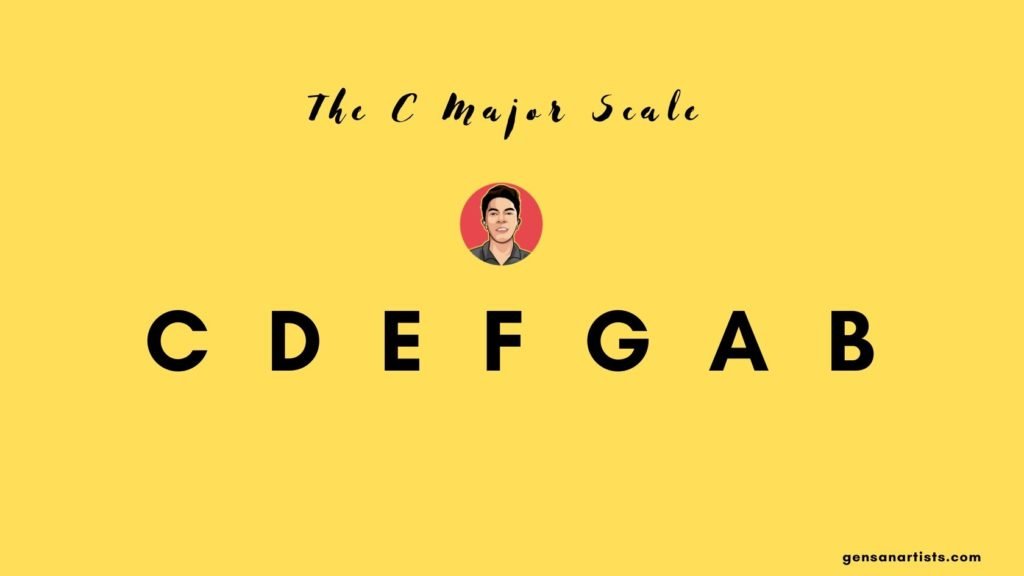
The Formula To Remember The Chords In Any Major Scale
To avoid going too deep in music theory, I will make it easy for you to understand. I want you to remember the following sequence.
Major – minor – minor – Major – Major – minor – diminished
Regardless of whatever key you are in, as long as it’s a primary key, this sequence holds true as far as modern western music is concerned.
So applying it to our C Major Scale would yield the following sequence.
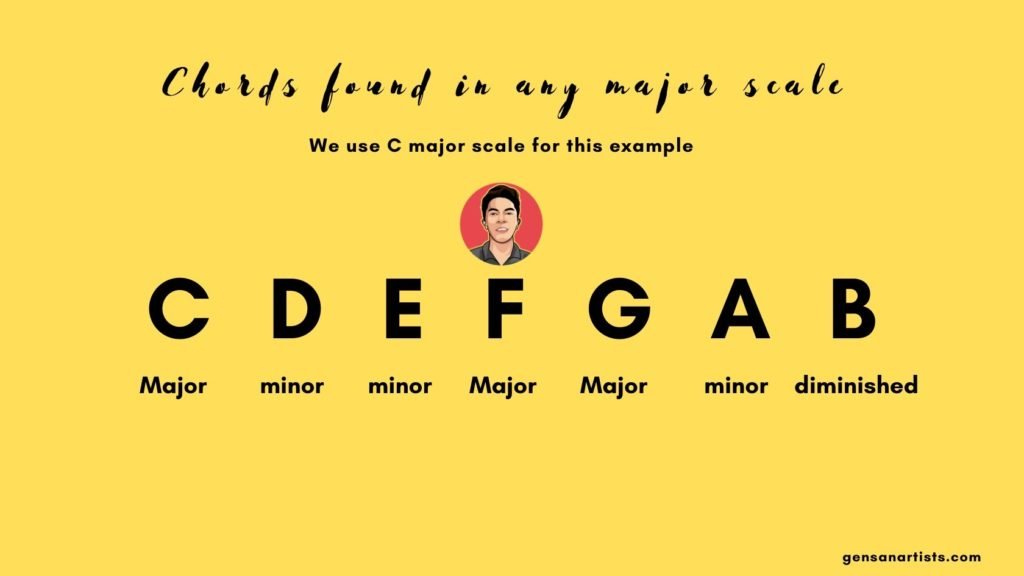
If you are writing a song on a major scale and want to know what chords are available on that scale, all you have to do is remember the sequence above.
Notice this.
You have 3 Major c, 3 minor chords, and 1 diminished chord in this formula.
Now, it’s up to you how you will use this set of chords for whatever song you are working on. The combination you use in your song makes all the difference.
Introducing the Roman Numerals Into Your Progression
Instead of writing C major, D minor (the full name), musicians developed a system of writing that makes things easier to remember – it also looks cleaner.
Using the roman numerals as a system of writing your chord progressions.
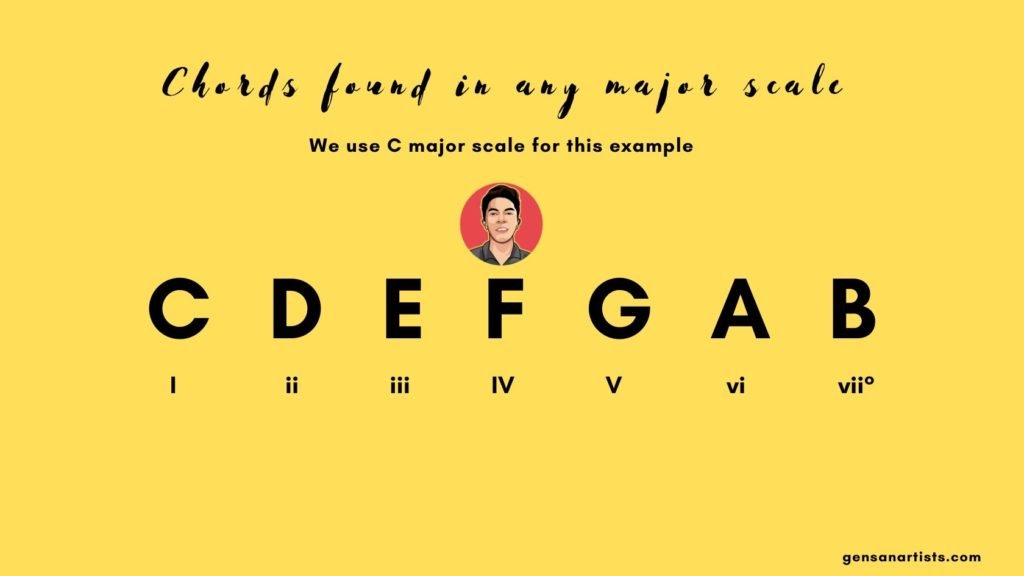
As you can observe from the image above, we’ve changed the Major – minor labels into Roman Numerals.
Note: A major chord will use an uppercase Roman numeral while a minor chord will use lowercase, and the diminished chord has a letter ‘0’ symbol on top.
Whatever key signature you are in, Roman numerals stay the same, and that’s one of the major reasons why it’s more convenient to use.
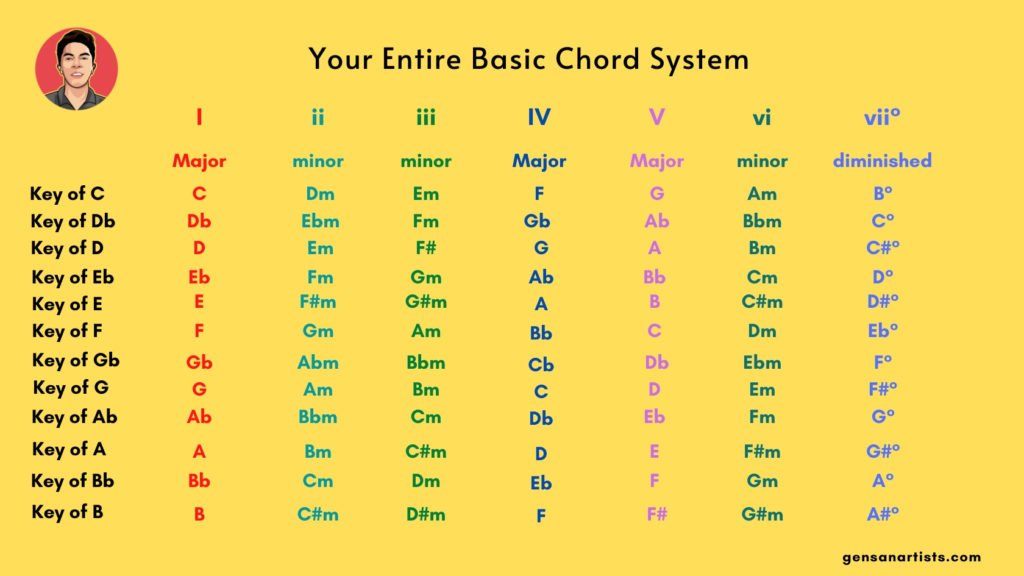
Notice the image above; you only have a single line of Roman Numerals, which can be used across the entire scale system.
Popular Songs and Common Chord Progressions
A lot of songs today use one or two of the most common chord progressions you hear. As a starting point for all songwriters, we will discuss these common chord flows for you to use.
3 Chord Songs: I - IV - V - I
The first song I ever learned to play on a guitar only had 3 chords in it. It’s the song called “Leaving On A Jetplane.”
I remember playing it on the key of G and with the following sequence.
G – C – G – C – G – C – D
If you check our chord chart, the I – IV – V – I progression would look like this.

If you are working on a song, you can try this simple progression and work on your melody. It’s a good starting point and builds on it as you progress.
If you noticed, these are also all major triads, and no minor chords are involved.
Whatever key you are, the progression always returns to the first triad. Pretty simple!
Whether you play the guitar or a piano, this progression is pretty easy to play through your instrument.
So, when you are writing a song, decide what triad you want to start with then just apply this progression.
Billboard Chart Topper Progression: I - V - vi - IV
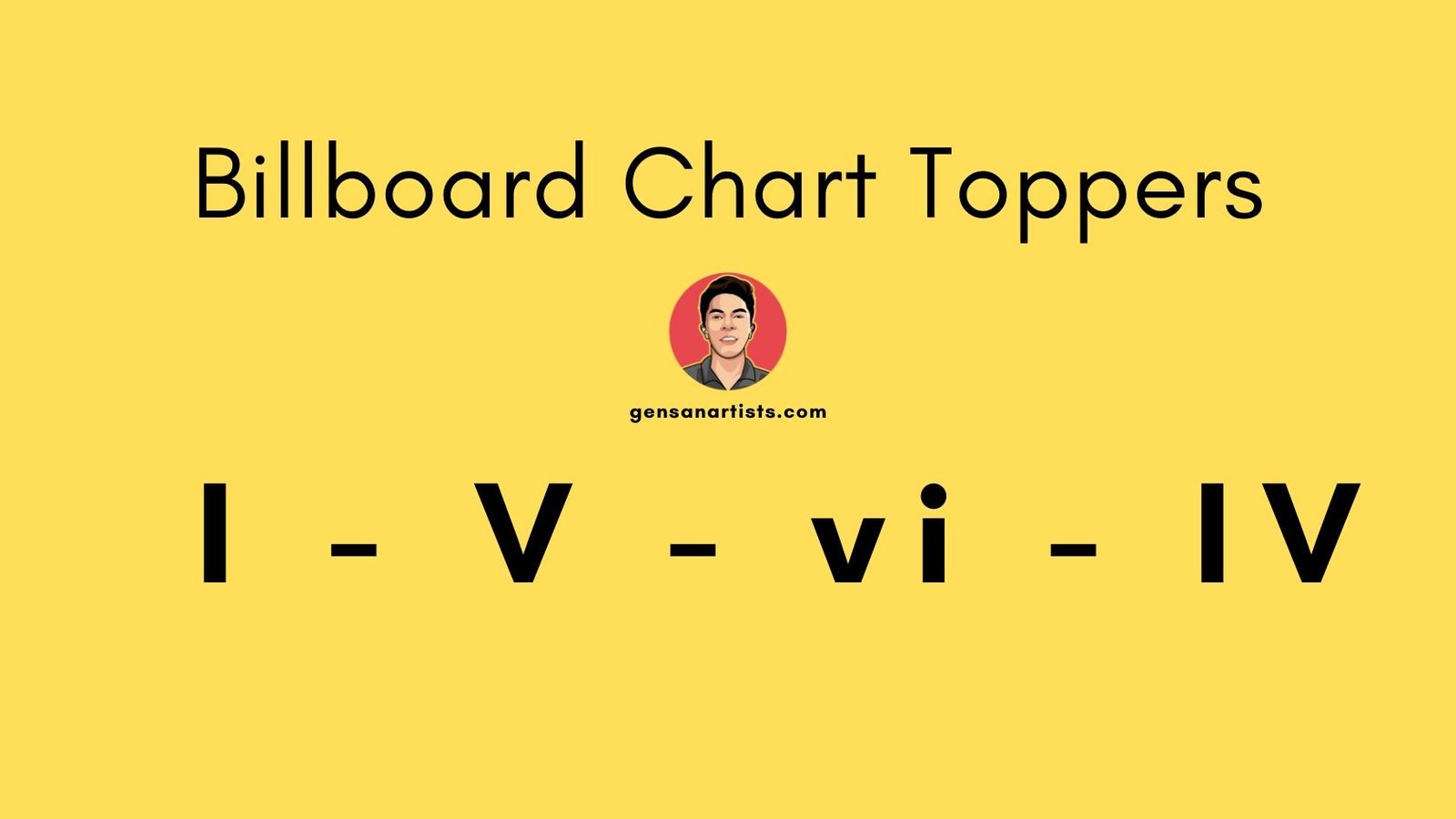
If you are working on a song, you can try this simple progression and work on your melody. It’s a good starting point and builds on it as you progress.
If you noticed, these are also all major triads, and no minor chords are involved.
Whatever key you are, the progression always returns to the first triad. Pretty simple!
Whether you play the guitar or a piano, this progression is pretty easy to play through your instrument.
So, when you are writing a song, decide what triad you want to start with then just apply this progression.
A good variation of this chord progression is I – vi – IV – V. Try it and you’ll see that it works just as well.
The vi - V - IV - V Progression
Here’s another common chord progression you hear on the radio that starts on a minor key. We will discuss minor chords further on a different article.
For now, just know that this chord sequence is also a good choice to build your songs on.
Chord Progression Generators
Do you want to think outside the box and try something new? It is a good thing that today’s technology offers a ton of assistance to aspiring songwriters.
There are sites on the internet today that generates a combination of chord progressions for you to try on your project.
Here are a few of them.
Your Songs And Your Choice Of Chord Choices
At the end of the day, it is you who will decide what chords to use and how you will use them within your song.
The goal of this article is to help you understand the possibilities that are at your disposal. The more you use these tips, the better you get at your songwriting.
Try out these tips on chord progressions and check how they affect the sound of your song.